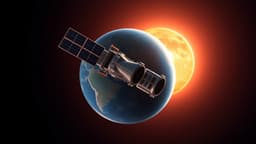Home / Science / Voyager 1 Nears Light-Day Milestone
Voyager 1 Nears Light-Day Milestone
25 Nov
Summary
- Voyager 1 will reach 16.1 billion miles in November 2026.
- The spacecraft launched in 1977 and explored Jupiter and Saturn.
- Voyager 1's power is diminishing, but it continues to transmit data.

Voyager 1 is set to reach a significant distance milestone in November 2026, traveling 16.1 billion miles from Earth, a distance known as a light-day. Launched in 1977, the spacecraft has already provided invaluable data from its explorations of Jupiter and Saturn, discovering new moons and volcanic activity. It officially left our solar system in August 2012.
Currently within the sun's gravitational field but in interstellar space, Voyager 1 studies plasma waves and magnetic fields. Engineers recently resolved a computer glitch, demonstrating the ongoing efforts to maintain its functionality despite the immense distance and communication delays. The spacecraft's power, generated by radioisotope thermoelectric generators, is slowly decreasing.
To extend its mission, NASA is conserving power by shutting down non-essential systems. Voyager 1, along with its twin Voyager, carries the Golden Record, a message to potential extraterrestrial civilizations. Even as power fades, the spacecraft will continue its silent journey through the cosmos for billions of years.



